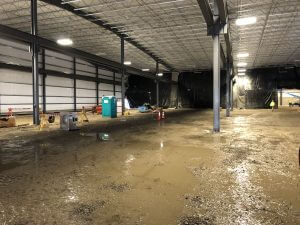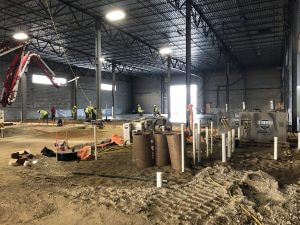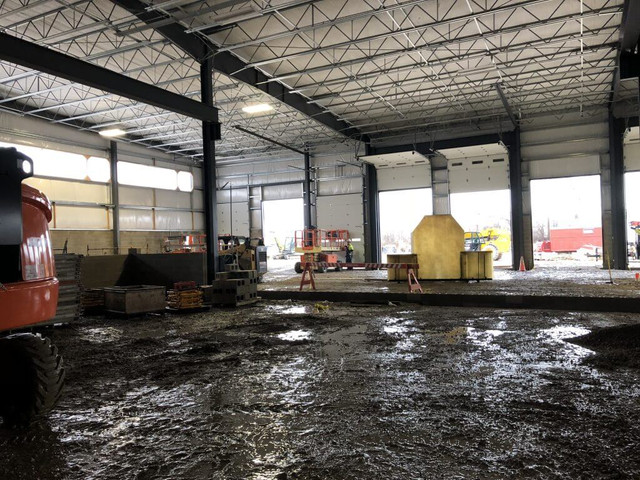From Frozen to Flooded: A Strategy for Handling Large Volume Sub-Base Moisture Woes
Posted by Matt Milos on Mar 22nd 2019
The spring showers that usher in warmer weather bring with them a rather unwelcome guest for construction: moisture.
If your structure wasn't sealed before the waves of rain and damp, you could encounter serious problems with your sub-base. A waterlogged sub-base is no place for new concrete, so it's time to consider your options to fix the problem.

With spring comes warm weather...and moisture
The most obvious choice? Wait for the water to evaporate on its own—but that could cost you weeks of production time. You could also regrade the area with stone but this rapidly racks up cost in extra material and labor. Some contractors decide to risk pouring and hope the moisture won't cause problems (which it does, more often than not).

Untreated moisture problems lead to huge delays and problems with the concrete.
This bring us to actively removing moisture with equipment.
With large volume structures, refrigerant and dessicant dehumidification are often both costly and require too much electricity for most temporary powered job sites. But there is a third option: evaporation, and you can do it with hydronic climate control.

Many job sites with temporary electricity can't power most heavy-duty dehumidifiers.
Unlike other methods that remove moisture by collecting it, hydronic recirculates air within the structure, replacing wet air with dry air. This dries out the structure without a need to dispose water. In fact, for every 10 degrees above ambient conditions hydronic cuts humidity in half.

Hydronic climate control removes moisture without the hassle of collecting water.
Depending on the size of your project and how much water you need removed hydronic heat can get your project back on track in days instead of weeks. Compared to the cost of lost time, regrading, or traditional dehumidification, hydronic offers you the best solution to a difficult problem.



